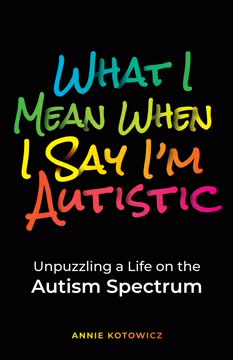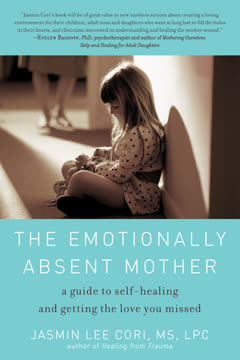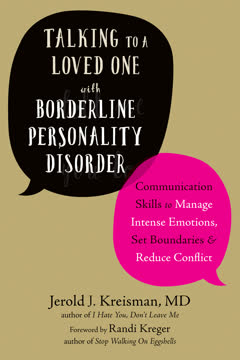Key Takeaways
1. Understand BPD: Recognizing the Challenges and Complexities
BPD is characterized by a number of defense mechanisms, or basic emotional reactions. The primary, animating defense mechanism of BPD is splitting, the need to divide contradictory perceptions.
Splitting shapes perception. This defense mechanism leads individuals with BPD to view people and situations in extremes - all good or all bad. This black-and-white thinking results in idealization or devaluation, making relationships challenging and unpredictable.
Emotional instability is pervasive. People with BPD experience intense and volatile emotions, rapidly shifting between euphoria, anger, anxiety, and depression. This emotional rollercoaster can be exhausting for both the individual and their loved ones.
Identity confusion is common. Many with BPD struggle with a fragmented sense of self, leading to:
- Uncertainty about personal values and goals
- Frequent changes in career plans, friendships, and romantic relationships
- Difficulty maintaining a consistent self-image
2. Master SET-UP: Support, Empathy, Truth, Understanding, Perseverance
SET-UP is not a way to cure a borderline individual but, rather, a technique to help you, the individual's communication partner, relate to her.
Support forms the foundation. Express your concern and commitment to helping the person with BPD. Use "I" statements to convey your personal investment, such as "I care about you and want to help."
Empathy builds connection. Acknowledge the pain and conflicted feelings of the individual with BPD. Focus on their experience, not yours, with statements like "This must be incredibly difficult for you."
Truth introduces reality. After establishing support and empathy, gently present a realistic assessment of the situation. Emphasize the individual's responsibility in addressing issues, while offering your help.
Understanding and Perseverance are overarching attitudes that guide the entire interaction:
- Maintain perspective on BPD's challenges
- Commit to weathering storms and setbacks
- Recognize progress, even when small
3. Navigate No-Win Dilemmas: Balancing Contradictory Demands
The no-win situation is often your most frustrating challenge in addressing borderline paradoxes.
Recognize the trap. People with BPD often create situations where any response seems wrong. This stems from their black-and-white thinking and fear of abandonment or engulfment.
Avoid defensive reactions. When faced with a no-win scenario:
- Don't argue logic or try to prove yourself right
- Resist the urge to become defensive or retaliatory
- Focus on validating emotions while maintaining boundaries
Seek middle ground. Use SET-UP to navigate these dilemmas:
- Express support for the person's feelings
- Empathize with their struggle
- Gently introduce truth about the situation
- Propose compromise solutions when possible
- Be willing to postpone resolution if emotions are too high
4. Manage Borderline Anger: De-escalation and Emotional Regulation
Fighting the fire of rage with more fire will usually not extinguish the blaze.
Stay calm in the storm. When faced with intense BPD anger:
- Lower your voice as they raise theirs
- Slow your speech and movements
- Avoid accusatory language or defensive posturing
Validate without agreeing. Use empathy statements to acknowledge their emotions without necessarily endorsing their perspective. For example: "I can see how upset you are about this situation."
Redirect and refocus. Once the initial surge of anger has passed:
- Shift attention to less volatile topics
- Emphasize shared goals or concerns
- Propose constructive actions to address the underlying issue
- Delay major decisions or discussions until emotions have settled
5. Address Abandonment Fears: Building Trust and Security
Just as borderline anger may push you away, the BP's fears of being left may pull you crushingly close.
Understand the root cause. Abandonment fears in BPD often stem from:
- Early experiences of neglect or instability
- Difficulty trusting others' commitment
- An unstable sense of self-worth
Provide consistent reassurance. While you can't completely eliminate abandonment anxiety, you can:
- Offer regular verbal and non-verbal expressions of care
- Follow through on commitments and promises
- Explain absences or changes in routine in advance
Encourage healthy independence. Paradoxically, addressing abandonment fears also involves:
- Supporting the development of the person's own interests and relationships
- Celebrating their accomplishments and growth
- Setting appropriate boundaries to prevent unhealthy enmeshment
6. Foster Identity Development: From Emptiness to Selfhood
Borderline identity is like malleable, soft clay that can be sculpted into any shape, that can squeeze into any prefashioned mold, but without a model, it remains amorphous.
Recognize identity struggles. People with BPD often experience:
- A chronic feeling of emptiness
- Rapid shifts in self-image, values, and goals
- Difficulty maintaining a consistent sense of self
Encourage self-exploration. Help the person with BPD develop a stronger identity by:
- Supporting their pursuit of interests and passions
- Validating their emotions and experiences
- Gently challenging distorted self-perceptions
Provide a stable reference point. While avoiding becoming their sole source of identity:
- Offer consistent feedback on their positive qualities
- Remind them of past accomplishments and growth
- Help them connect current behaviors to long-term goals and values
7. Confront Victimization: Encouraging Resilience and Growth
Thus, sometimes it is your loved one who feels guilt-ridden and self-blaming, who feels punished. But at other times you may feel you are the one being pummeled, as the perpetrator of the BP's unhappiness.
Recognize the victim mindset. People with BPD may:
- View themselves as perpetually wronged or mistreated
- Struggle to take responsibility for their actions
- Use victimhood as a defense against change or accountability
Validate pain without reinforcing helplessness. Use SET-UP to:
- Acknowledge past hurts and unfair treatment (Support, Empathy)
- Highlight strengths and resilience demonstrated (Truth)
- Encourage focus on present choices and future possibilities (Understanding, Perseverance)
Promote agency and problem-solving. Guide the person towards:
- Identifying specific, changeable aspects of their situation
- Developing coping strategies for managing difficult emotions
- Setting small, achievable goals to build confidence and momentum
8. Handle Self-Destructive Behaviors: Compassion and Safety First
It is important to understand that this self-harming tendency is a result of the BP's unhealthy attempts to cope with anxiety and emotional pain.
Prioritize safety. When confronted with self-harm or dangerous impulsivity:
- Remain calm and non-judgmental
- Assess the immediate risk and seek professional help if needed
- Create a safe environment by removing potential hazards
Understand the function. Self-destructive behaviors often serve to:
- Relieve intense emotional pain
- Provide a sense of control
- Punish oneself or others
- Communicate distress when words feel inadequate
Develop healthier alternatives. Work with the person to identify:
- Less harmful ways to express intense emotions
- Coping skills for managing distress (e.g., mindfulness, physical exercise)
- Professional resources for ongoing support and skill-building
9. Maintain Boundaries: Protecting Yourself While Supporting Others
Examining your own need to rescue and be a hero. Sometimes, despite your best efforts, the relationship may not work. The BP may not molt and cast off the armor of illness that obscures the beauty inside. You may not be the one who can rescue the victim in distress.
Recognize your limits. Supporting someone with BPD can be emotionally draining. It's crucial to:
- Identify your own emotional and physical boundaries
- Communicate these limits clearly and consistently
- Seek support for yourself through therapy, support groups, or trusted friends
Avoid enabling destructive patterns. While offering support, be cautious not to:
- Take responsibility for the person's emotions or actions
- Sacrifice your own well-being to meet unreasonable demands
- Ignore or excuse abusive or manipulative behavior
Encourage professional help. Recognize that your role is supportive, not therapeutic:
- Validate the challenges of BPD while emphasizing the benefits of professional treatment
- Offer to assist in finding appropriate resources (therapists, support groups, etc.)
- Be prepared to set firm boundaries if the person refuses to seek necessary help
Last updated:
FAQ
What is "Talking to a Loved One with Borderline Personality Disorder" by Jerold J. Kreisman about?
- Practical Communication Guide: The book provides practical communication strategies for people who have a loved one with Borderline Personality Disorder (BPD), focusing on managing intense emotions, setting boundaries, and reducing conflict.
- Relationship-Focused: It is specifically written for partners, family members, and friends—not for those diagnosed with BPD themselves—offering tools to maintain and improve these often challenging relationships.
- SET-UP Method: The core of the book is the SET-UP communication system (Support, Empathy, Truth – Understanding, Perseverance), a structured approach to interacting with someone with BPD.
- Real-Life Scenarios: The book uses numerous real-life examples and case studies to illustrate common dilemmas and how to apply the recommended techniques.
Why should I read "Talking to a Loved One with Borderline Personality Disorder" by Jerold J. Kreisman?
- Expert Author: Jerold J. Kreisman is a leading psychiatrist and expert on BPD, coauthor of the classic "I Hate You—Don’t Leave Me," bringing decades of clinical experience to this book.
- Accessible and Practical: The book is written in clear, jargon-free language, making complex psychological concepts easy to understand and apply.
- Empathy and Respect: It emphasizes empathy, respect, and perseverance, helping readers maintain their own well-being while supporting their loved one.
- Widely Endorsed: The book is recommended by clinicians, therapists, and people with lived experience, making it a trusted resource for families and partners.
What are the key takeaways from "Talking to a Loved One with Borderline Personality Disorder"?
- SET-UP Communication: The SET-UP method (Support, Empathy, Truth – Understanding, Perseverance) is central, providing a framework for effective, non-confrontational communication.
- Balance and Boundaries: Maintaining healthy boundaries and balancing support with truth is essential for both the loved one and the partner’s well-being.
- Common Challenges: The book addresses specific BPD challenges such as anger, abandonment fears, identity issues, victimization, and self-destructive behaviors, offering tailored strategies for each.
- Progress is Possible: With understanding and perseverance, relationships can improve over time, and many people with BPD do get better, especially with consistent support and appropriate boundaries.
What is the SET-UP communication method described in "Talking to a Loved One with Borderline Personality Disorder"?
- Support: Expresses concern and commitment to help, using “I” statements to show you care.
- Empathy: Acknowledges the loved one’s feelings and experiences, using “you” statements to validate their pain.
- Truth: Presents realistic, practical options and emphasizes the individual’s responsibility in a non-blaming way.
- Understanding and Perseverance: These are overarching attitudes, reminding the partner to maintain empathy and commitment even through setbacks.
- Application: The method is used in every interaction, and the book provides examples of how to balance these elements and adjust when one is not being “heard.”
How does "Talking to a Loved One with Borderline Personality Disorder" define Borderline Personality Disorder (BPD)?
- DSM-5 Criteria: BPD is defined by at least five of nine criteria, including fear of abandonment, unstable relationships, identity disturbance, impulsivity, self-harm, mood instability, chronic emptiness, intense anger, and transient paranoia or dissociation.
- Splitting: The book highlights “splitting” as a core defense mechanism—seeing people and situations in black-and-white terms, with rapid shifts between idealization and devaluation.
- Impact on Relationships: BPD symptoms can be confusing and painful for loved ones, often leading to cycles of closeness and conflict.
- Co-occurring Issues: BPD often overlaps with other conditions like depression, anxiety, substance abuse, and eating disorders, complicating diagnosis and treatment.
What are the most common challenges faced by loved ones of someone with BPD, according to Jerold J. Kreisman?
- No-Win Dilemmas: Loved ones often encounter “damned-if-you-do, damned-if-you-don’t” situations where any response seems wrong.
- Anger and Rage: Sudden, intense anger can be directed at the partner, leading to emotional exhaustion and self-doubt.
- Abandonment Fears: The BP may alternate between clinging and pushing away, making it hard to maintain stable intimacy.
- Identity Issues: The person with BPD may lack a consistent sense of self, leading to unpredictable behavior and shifting roles.
- Victimization and Self-Destructiveness: The BP may see themselves as a perpetual victim or engage in self-harming behaviors, which can be distressing and difficult to address.
How does "Talking to a Loved One with Borderline Personality Disorder" recommend setting boundaries and limits?
- Realistic and Consistent: Boundaries must be realistic, consistently enforced, and within the partner’s control—empty threats or unenforceable limits undermine trust.
- Non-Punitive: Limit-setting is not about punishment but about clearly stating what you can and cannot do, and following through.
- Support and Empathy First: Boundaries should be communicated with support and empathy, not as ultimatums or criticisms.
- Preparation and Agreement: Especially in families, all involved parties should agree on boundaries and consequences to avoid mixed messages.
What complementary techniques, besides SET-UP, does Jerold J. Kreisman suggest in "Talking to a Loved One with Borderline Personality Disorder"?
- Transitional Objects: Giving a loved one a meaningful object (like a photo or clothing) can help ease separation anxiety.
- Predicting Outcomes: Calmly walking the BP through likely consequences of their actions can help them anticipate and avoid impulsive behaviors.
- Paradoxical Positions: Sometimes endorsing the opposite of what the BP expects can prompt them to reconsider their stance.
- Constructive Procrastination: Delaying a response to a demand can prevent impulsive decisions and allow time for emotions to settle.
- De-escalation: Lowering your own emotional intensity and avoiding repeated arguments can help defuse conflicts.
How does "Talking to a Loved One with Borderline Personality Disorder" address self-destructive and impulsive behaviors?
- Understanding the Function: Self-harm and impulsivity are often coping mechanisms for emotional pain, not necessarily suicide attempts.
- Safety First: In emergencies, immediate action (such as calling 911) may be necessary, even if it angers the BP.
- Alternative Coping: The book suggests replacing self-harm with less destructive activities (e.g., exercise, art, holding ice).
- Consistent Boundaries: All caregivers should agree on responses to self-destructive behavior, and boundaries should be enforced compassionately but firmly.
What advice does Jerold J. Kreisman give for dealing with anger and conflict in relationships with someone with BPD?
- Don’t Escalate: Responding to anger with more anger only intensifies conflict; instead, stay calm, speak softly, and avoid accusations.
- Support and Empathy First: Before addressing the “truth” or problem-solving, validate the BP’s feelings and show you care.
- Refocus Attention: If possible, shift the conversation to less charged topics or shared concerns to reduce emotional intensity.
- Protect Self-Esteem: Don’t absorb all blame or criticism; maintain your own boundaries and seek outside support if needed.
How does "Talking to a Loved One with Borderline Personality Disorder" suggest partners handle feelings of victimization and hopelessness in their loved one?
- Acknowledge Pain, Don’t Wallow: Empathize with the BP’s suffering but avoid reinforcing a sense of helplessness or colluding with their hopelessness.
- Highlight Strengths: Point out the BP’s resilience and accomplishments, even if small, to counteract the victim narrative.
- Contextualize the Past: Help the BP see past traumas in the context of their whole life, not as defining their entire identity.
- Avoid Hero or Scapegoat Roles: Don’t try to “rescue” the BP or accept all blame; support should be balanced and realistic.
When does Jerold J. Kreisman recommend holding on to or letting go of a relationship with someone with BPD, according to "Talking to a Loved One with Borderline Personality Disorder"?
- Signs to Stay: Stay if both partners are working toward improvement, can resolve conflicts respectfully, and the relationship is more rewarding than harmful.
- Signs to Leave: Consider leaving if there is persistent blame, refusal to seek help, no progress over time, ongoing violence or threats, or if staying causes more pain than leaving.
- Gradual Change: Recognize that progress often comes in stages—first after the fact, then during, and finally before problematic behaviors.
- Keep an Opening: Even if intimacy ends, maintaining some contact may be possible, but boundaries must be clear and self-care prioritized.
What are the best quotes from "Talking to a Loved One with Borderline Personality Disorder" by Jerold J. Kreisman and what do they mean?
- “SET-UP is more than just a communication system. It’s an essential tool for improving the relationship itself—because effective, respectful discussions are at the heart of building trust and love.”
This highlights the centrality of communication in healing and maintaining relationships with someone with BPD. - “Learning to be with someone with BPD can be a consuming challenge. The rest of this book is dedicated to trying to help you with that challenge.”
Acknowledges the difficulty and the book’s commitment to providing practical help. - **“Maintaining your own health with
Review Summary
Talking to a Loved One with Borderline Personality Disorder receives mixed reviews. Many readers find it informative and practical, praising the SET-UP approach for communication. The book offers insights into BPD and strategies for dealing with loved ones affected by it. However, some criticize its focus on romantic relationships, oversimplification of complex issues, and potential reinforcement of stigma. While some readers appreciate the real-life examples and communication techniques, others feel it lacks sufficient guidance on setting boundaries and addressing abusive dynamics.
Similar Books





Download PDF
Download EPUB
.epub digital book format is ideal for reading ebooks on phones, tablets, and e-readers.






